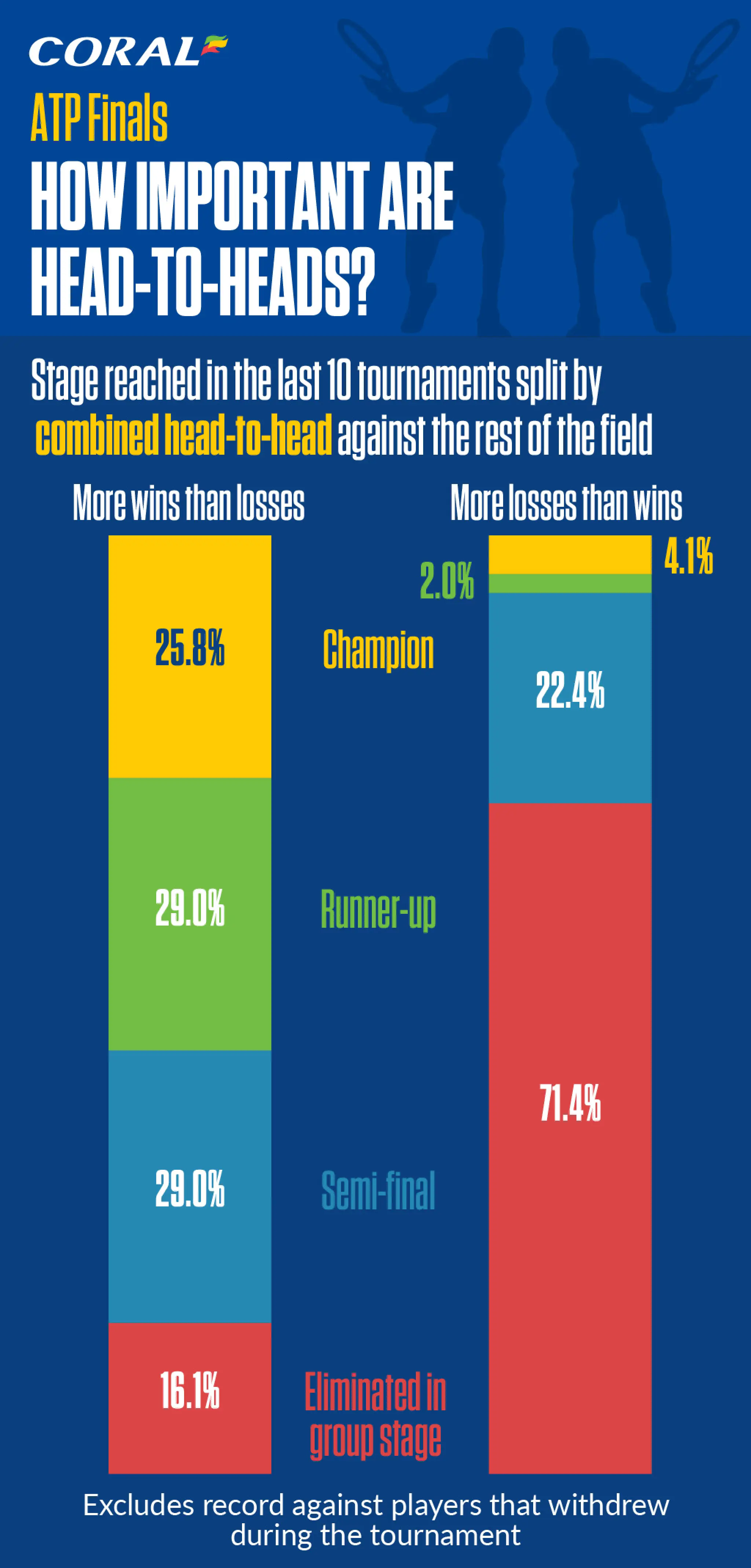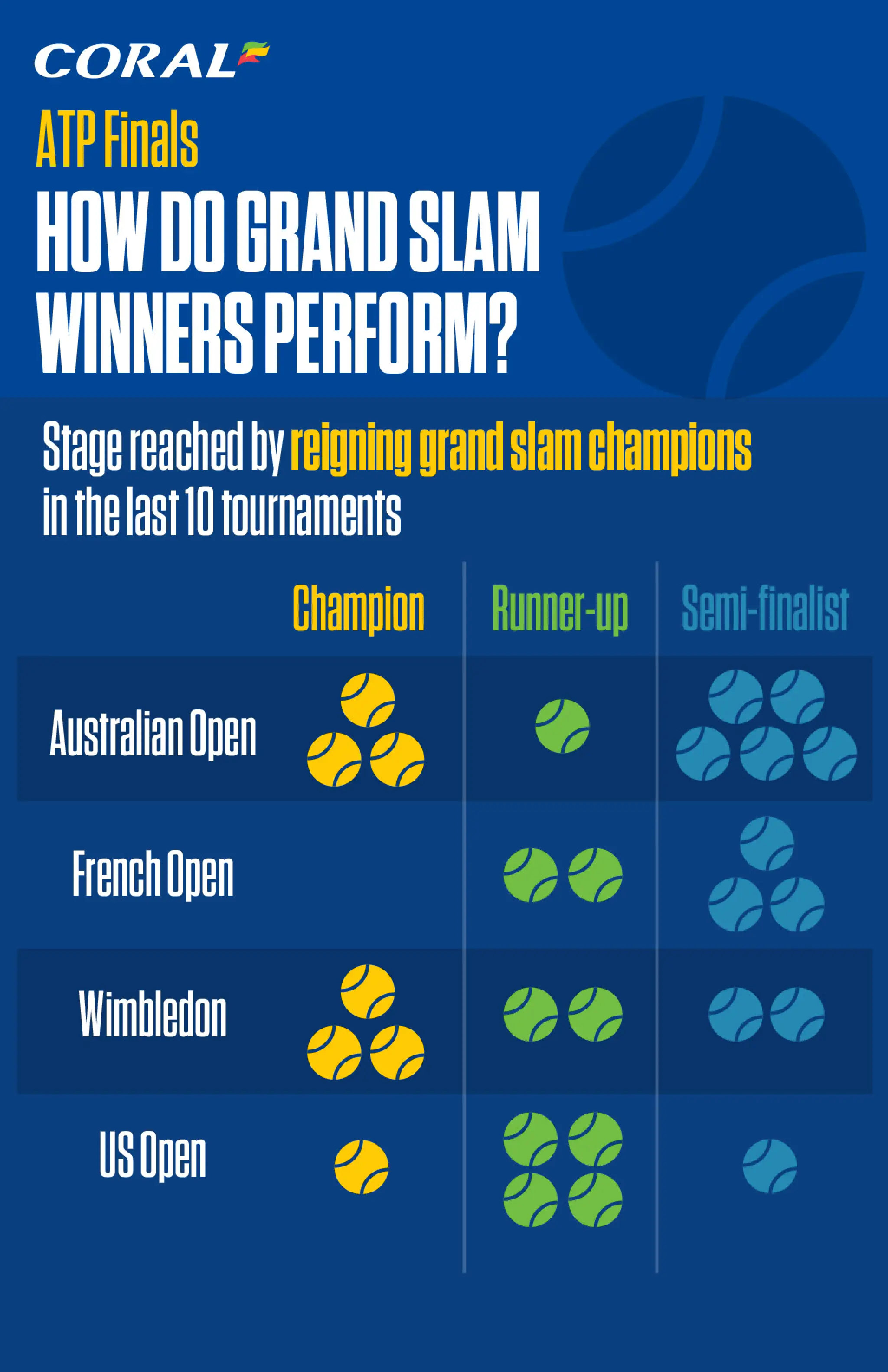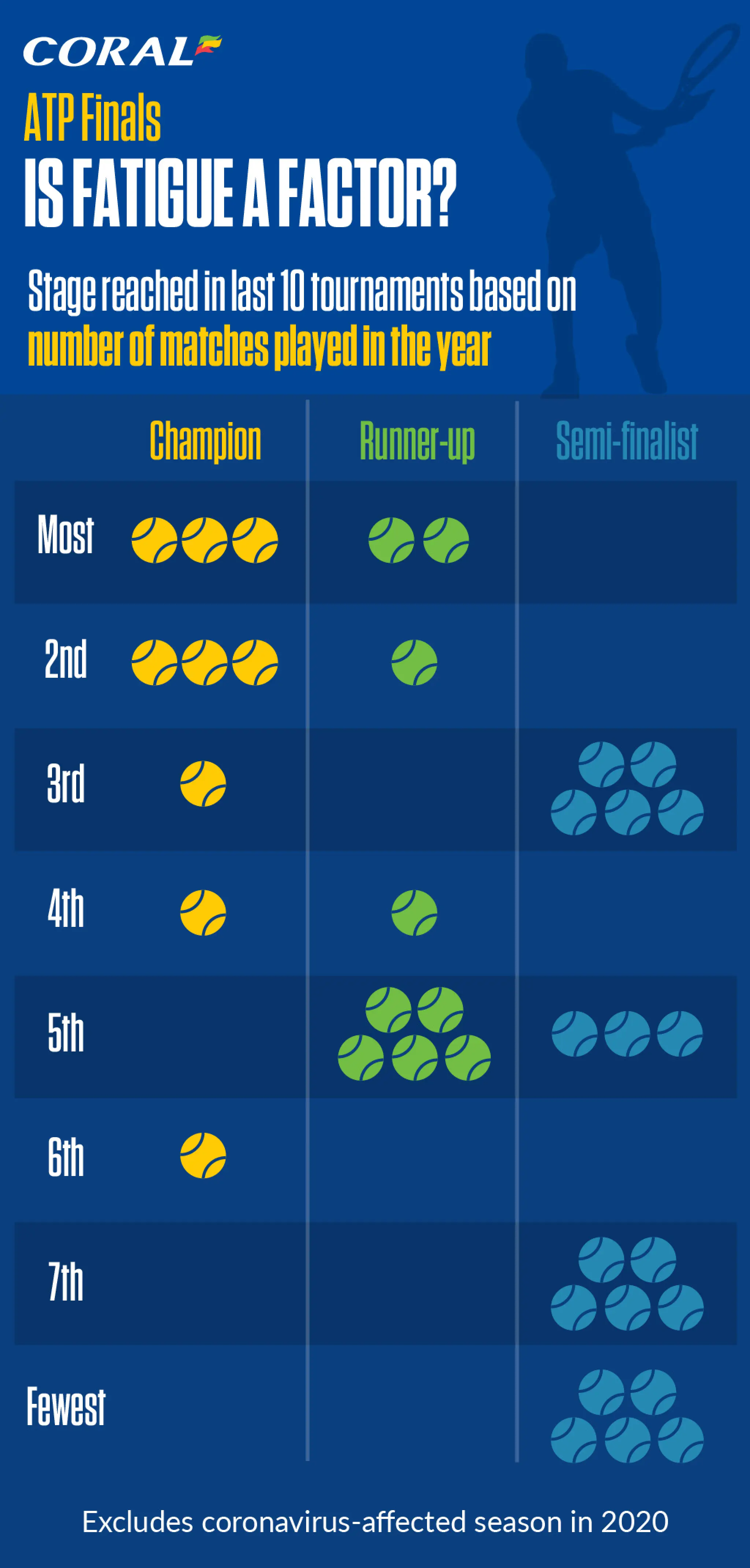ATP Finals: Who will win end-of-season tournament in Turin?
Published:
ATP Finals betting preview: Eight players in the mix
The season-ending ATP Finals starts in Turin on Sunday, November 13, as the world’s top male tennis players look to finish the year on a high.
The ATP Finals is a unique event that brings together the best players and – despite the absence of teenage world number one Carlos Alcaraz through injury – this year’s field promises several enticing match-ups between the old generation and the new.
We have crunched the numbers from the last 10 tournaments to work out which players are most likely to challenge for the title.
How much do rankings matter?
With entry limited to the top eight players in the world, results at the ATP Finals can be hard to predict. The past four winners all lost a match during the round-robin phase, with Bulgaria’s Grigor Dimitrov (2017) the most recent champion to go through the entire tournament undefeated.
That said, the cream generally rises to the top. At least one of the first or second seeds has featured in seven of the previous 10 finals, with the former proving the most successful overall.

The past decade can be split into two halves. The first five tournaments were dominated by the best players – Novak Djokovic won four successive titles between 2012 and 2015, before Andy Murray scooped the top prize in 2016 to secure the year-end number one ranking.
However, the five events since 2017 have all been won by players outside the top two, including last year’s champion Alexander Zverev who upset the in-form Daniil Medvedev in the final.
What are the other predictors of success?
Regardless of ranking, it is important to have some experience of competing against – and beating – the very best players, ideally before entering the ATP Finals.
Since 2012, only 29 per cent of players with a losing record against their competitors before the event managed to reach the semi-finals, compared with 84 per cent of those with a winning head-to-head. Just two players were able to overcome this during the tournament and win the title, namely Dimitrov in 2017 and Stefanos Tsitsipas in 2019.
Tsitsipas will hope to repeat the feat this year as one of five players with a losing head-to-head against the rest of the field. The others are former participants Casper Ruud and Andrey Rublev, and debutants Félix Auger-Aliassime and Taylor Fritz.

Fritz is the first American player to appear at the Finals since John Isner in 2018, while you have to go all the way back to Pete Sampras in 1999 to find the last season-ending champion from the United States.
As a replacement for the injured Alcaraz, Fritz will be the lowest-ranked player at the event. Those that qualify because of an injury to another player tend to fare poorly, with 12 out of 13 replacements in the last 10 years exiting in the group phase.
Curiously, 22-time grand slam champion and this year’s top seed Rafael Nadal has never won the ATP Finals. Despite twice finishing as runner-up (in 2010 and 2013), the Spanish world number two has either missed the event entirely or pulled out during the tournament through injury on seven occasions.
Nadal – a 14-time winner of the French Open – is one of several Roland Garros champions to have struggled at the Finals. The last man to triumph on the Parisian clay and at the season-ending event was Gustavo Kuerten in 2000.
In contrast, the reigning Australian Open, Wimbledon and US Open champions have a decent record of reaching the final, with the fast indoor hard courts bearing a closer resemblance to the surfaces at those tournaments – as opposed to the slower clay courts at Roland Garros.

By winning the Australian Open in January, Nadal has shown form worthy of claiming the one major trophy to elude him. However, he will have to contend with Wimbledon champion Djokovic, who is bidding to equal Roger Federer’s record of six season-ending titles.
Is fatigue a factor?
With 1,500 world ranking points on offer for the winner, the ATP Finals is the fifth-biggest event of the year, behind the four grand slams. However, it is scheduled at the end of a gruelling season, hence the withdrawal of Alcaraz this year and Nadal in previous editions.
It can sometimes turn into a survival of the fittest contest, with younger players faring better than their older counterparts. The average age of the title-winner in the past decade is 25, compared with 28 at the US Open and 30 at the remaining three grand slams.
Unlike the four majors, the average age of the tournament winner is lower than the runner-up. The younger player has emerged victorious in nine of the past 10 finals.

The last four season-ending championships have been won by players under the age of 25, with Federer in 2011 the last player to triumph after turning 30. The 22-year-old debutant Auger-Aliassime is the youngest player in this year’s field, followed by Norway’s Ruud (23) and Greece’s 2019 champion Tsitsipas (24). Nadal (36) and Djokovic (35) are the only entrants in their 30s.
Nadal and Djokovic may take solace from being the freshest of this year’s competitors, having played just 44 matches apiece in the year to date. The other six qualifiers have all played more than 60 tour-level matches in 2022.
However, recent results suggest that it is better to be battle-hardened going into the tournament, rather than undercooked. Excluding the coronavirus-affected season in 2020, six out of nine ATP Finals since 2012 have been won by players with the most or second-most matches under their belt. Furthermore, none of the players with the lowest match tallies have managed to reach the final.

Of this year’s competitors, Tsitsipas has played the most ATP Tour matches in 2022 (82), just ahead of Auger-Aliassime (81). They are clear of the rest of the field, with Ruud next on 68.
All odds and markets correct as of date of publication









